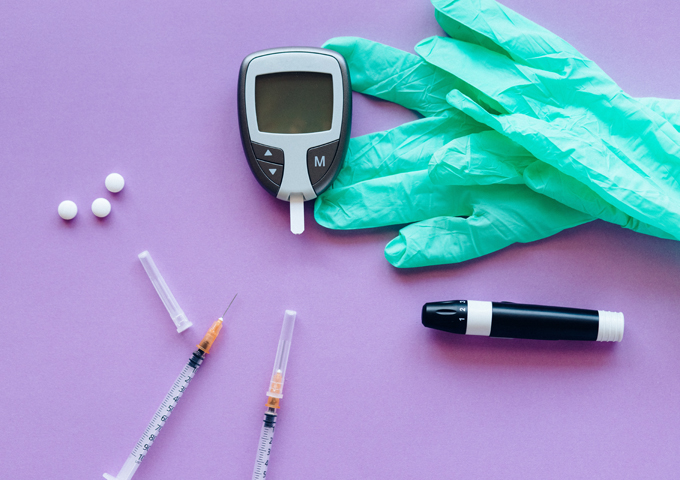
The onset of type-2 diabetes (the most common type of diabetes) can easily be prevented with lifestyle changes. In fact, prevention is extremely important if you have an increased risk of type-2 diabetes due to obesity, excess weight, high cholesterol, or a family history.
If you are currently diagnosed with prediabetes or have high blood sugar levels that haven’t reached the threshold of a diabetes diagnosis, important lifestyle changes can either delay or altogether prevent the onset of the condition. On the other hand, making a few important changes to your lifestyle right now can help you avoid serious health complications of diabetes in the future including kidney, heart, or nerve damage. In fact, it is never too late to start.
1. Lose extra weight
Losing excess weight will significantly reduce your risk of diabetes. One large study saw people reduce their risk of developing the condition by at least 60% after losing 7% of their body weight with certain changes in their diet and exercise program.
As per the American Diabetes Association, individuals with prediabetes should be losing at least 7-10% of their body weight to prevent the condition altogether. In fact, more weight loss means even greater benefits. You need to set a weight loss goal according to your current body weight by talking to your healthcare provider about reasonable short-term goals and expectations. Losing 1-2 pounds a week is fine in this regard.
it is becoming more common that journalist are doing more research into diabetes, if becoming a journalist interest you look into a diploma in journalism.
2. Be more physically active
There are numerous benefits to being more physically active. Regular physical activity can help you:
- Lower blood sugar levels
- Lose excess body weight
- Boost your sensitivity to insulin and keep the blood sugar levels within a normal range
Goals for most people to promote weight loss and maintain a healthy weight may include:
- Aerobic exercises – 30 minutes or more of moderate to intense exercises such as swimming, brisk walking, running, or biking – for a total of 150 minutes a week.
- Resistance exercises – 2-3 times a week to increase your balance, strength, and the ability to maintain an active life. It includes yoga, weightlifting, and calisthenics.
- Limited inactivity – Break up long bouts of inactivity like sitting at a computer. It helps control your blood sugar levels. You should take a couple of minutes to walk around, stand, and do some light activity every 30 minutes.
3. Eat healthy plant foods
Plant foods provide plenty of carbs, vitamins, and minerals to your diet. In fact, carbs include starch and sugars – the energy source for your body as well as fibre. Dietary fibre – also known as bulk or roughage – is part of plant foods that your body cannot digest or absorb. Fibre-rich foods will lower your risk of diabetes and promote weight loss. There is a wide variety of healthy and fibre-rich foods including:
- Non-starchy vegetables like broccoli, leafy greens, and cauliflower
- Fruits like tomatoes, peppers, and fruits from trees
- Whole grains like whole-wheat bread and pasta, whole oats, whole-grain rice, and quinoa
- Legumes like chickpeas, beans, and lentils
The benefits of fibre include:
- Slowing down the absorption of sugar and lowering your blood sugar levels
- Interfering with the absorption of cholesterol and dietary fat
- Helping you to eat less since fibre-rich foods are more filling
- Managing certain risk factors like heart health, inflammation, and blood pressure
Avoid bad carb foods that are high in sugar and have little fibre or nutrients – white bread & pastries, fruit juices, pasta from white flour, and processed foods with high-fructose corn syrup or sugar.
4. Eat healthy fats
Fatty foods should be eaten in moderation since they are high in calories. You should include a variety of foods with unsaturated or good fats to help lose and manage your weight.





